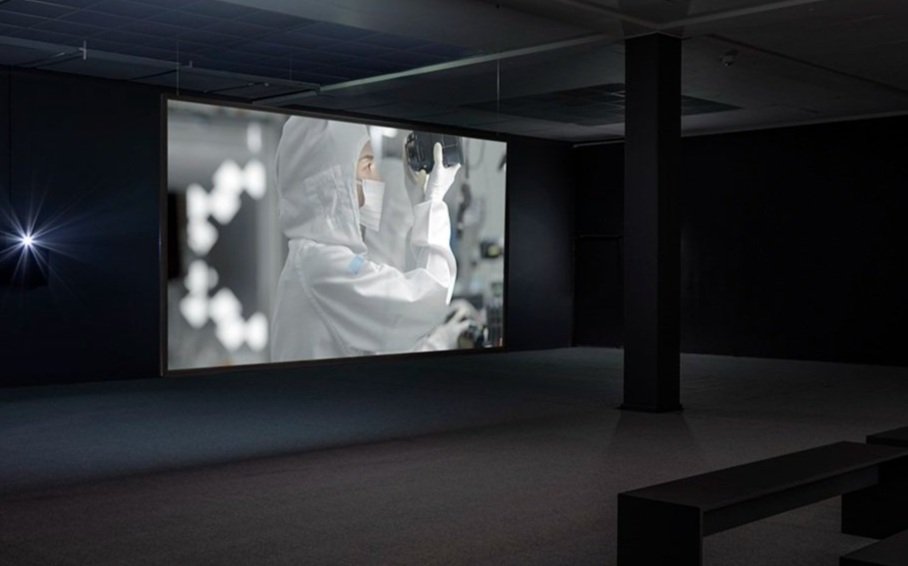The Vision Machine
2020. Single-channel HD video (from 4K), 16:9, colour, stereo sound, 13 min 27 secs
The Vision Machine was filmed at the factory of SIGMA Corporation, a renowned global brand of lenses for photography and cinema production. Like most such manufacturers, it is based in Japan. Using lenses manufactured by the factory, Young filmed their female employees as they performed their usual tasks on the production, assembly and testing process. No men are featured, and while the piece alludes to the genres of documentary or corporate video, it was filmed and edited to suggest a speculative fiction: a lensmaking factory run (and perhaps owned) by women.
Macro shots of glassy surfaces capture layers of imagery, like an endlessly internal, self-reflexive world: lenses are here seen watching and filming women, in relation to women producing lenses. A soundtrack weaves location recordings to suggest the mysterious and vast scale of the factory, mixed with the precise, delicate sound of hands touching glass and metal, although audio only occasionally syncs with the visual, further abstracting the sense of space and place.
In this piece, the factory and its processes are suggested as metaphors for photography and cinema in a wider sense, and how women are framed within, and in relation to those fields. In a wider sense, the work suggests and questions the relations between mass production and the production of (female) identity. Nevertheless, the piece pays homage to women as skilled makers and creators – who so often have been overlooked in any industry or field. Young’s camera represents these female workers (all of whom agreed to appear in the work), but the lenses through which she does so have been made by SIGMA: these workers have constructed the tools for the ‘gaze’ of the work. In a sense, since the lenses are mass market products used to create wider visual culture, all other gazes could collapse into, or be absorbed by this one: a female-centric vision, or indeed, perhaps a wider visual culture created by women.
Press and curatorial quotes:
“An excellent work”, Jean Gagnon, Ciel Variable, Oct 2023
“An alternative, feminized history to counter the canonical narrative of Man’s optical conquest of the world.”
Ji-Yoon Han, curatorial essay, Montreal Biennial 2023
With special thanks to SIGMA Corporation for location access and for providing all the lenses used to shoot the work.
The production of this work was supported with grants from the Daiwa Foundation and the Elephant Trust.










